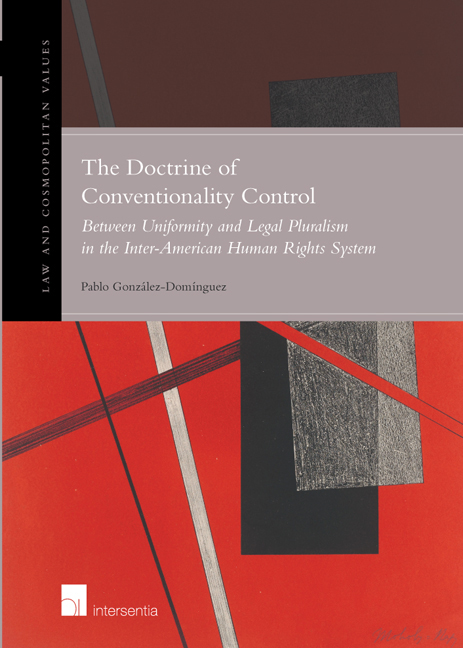 The Doctrine of Conventionality Control
The Doctrine of Conventionality Control Book contents
- Frontmatter
- Foreword
- Acknowledgments
- Contents
- List of Cases and Opinions
- List of Treaties, Instruments and Documents
- General Introduction
- Chapter 1 Jurisprudential Development of the Doctrine of Conventionality Control
- Chapter 2 Legal Analysis of the Doctrine of Conventionality Control
- Chapter 3 Questioning the Legal Validity of the Doctrine of Conventionality Control
- Chapter 4 Reconstructing the Doctrine of Conventionality Control in Light of the Principle of Subsidiarity
- General Conclusions
- Bibliography
- Index
- Miscellaneous Endmatter
Chapter 1 - Jurisprudential Development of the Doctrine of Conventionality Control
Published online by Cambridge University Press: 11 October 2018
- Frontmatter
- Foreword
- Acknowledgments
- Contents
- List of Cases and Opinions
- List of Treaties, Instruments and Documents
- General Introduction
- Chapter 1 Jurisprudential Development of the Doctrine of Conventionality Control
- Chapter 2 Legal Analysis of the Doctrine of Conventionality Control
- Chapter 3 Questioning the Legal Validity of the Doctrine of Conventionality Control
- Chapter 4 Reconstructing the Doctrine of Conventionality Control in Light of the Principle of Subsidiarity
- General Conclusions
- Bibliography
- Index
- Miscellaneous Endmatter
Summary
From the moment that violations of protected human rights are found, the evaluation of the incompatibility of legal provisions between domestic law and the American Convention on Human Rights becomes … no longer an abstract question. A law can per se be incompatible with the Convention to the extent that, for instance, inhibits the exercise of protected rights, even in the absence of a measure of application.
A.A. Cançado Trindade Dissenting Opinion in the case of El Amparo v. Venezuela (1995)INTRODUCTION
The study of the doctrine of conventionality control must start with a clarification: there is no article in the American Convention on Human Rights that expressly recognizes an international obligation for every public authority to perform an interpretation of domestic law in accordance with the Inter- American Corpus Juris, or to refrain from the enforcement of that law if no valid interpretation is possible. The creation of the doctrine of conventionality control – and therefore of each one of its technical components – is the result of a progressive and innovative interpretation performed by the Inter-American Court of Human Rights of the “general obligations” established in Articles 1.1 and 2 of the American Convention and of Articles 26 and 27 of the Vienna Convention on the Law of Treaties (hereinafter the Vienna Convention). The progressiveness of some of these interpretations (which served as the precedents for conventionality control) started years before the case of Almonacid Arellano and others v. Chile (2006) was decided.
The judgments that constitute the precedents for conventionality control developed the content of the obligation to ensure (Article 1.1), and progressively strengthened the normative force of Article 2. These judgments modified the understanding of Article 2 from being a norm with some sort of a programmatic nature – a position that supported the view that States have freedom to decide the means to ensure the rights protected by the Convention, and therefore that the Inter-American Court had little say in the specification of these means – to a norm that prescribed international obligations in the strongest sense of the word. This theoretical position opened the door for the Inter-American Court to evaluate the conventionality of the legislative and other measures taken by the States to ensure their compliance with the American Convention.
- Type
- Chapter
- Information
- The Doctrine of Conventionality ControlBetween Uniformity and Legal Pluralism in the Inter-American Human Rights System, pp. 13 - 62Publisher: IntersentiaPrint publication year: 2018
